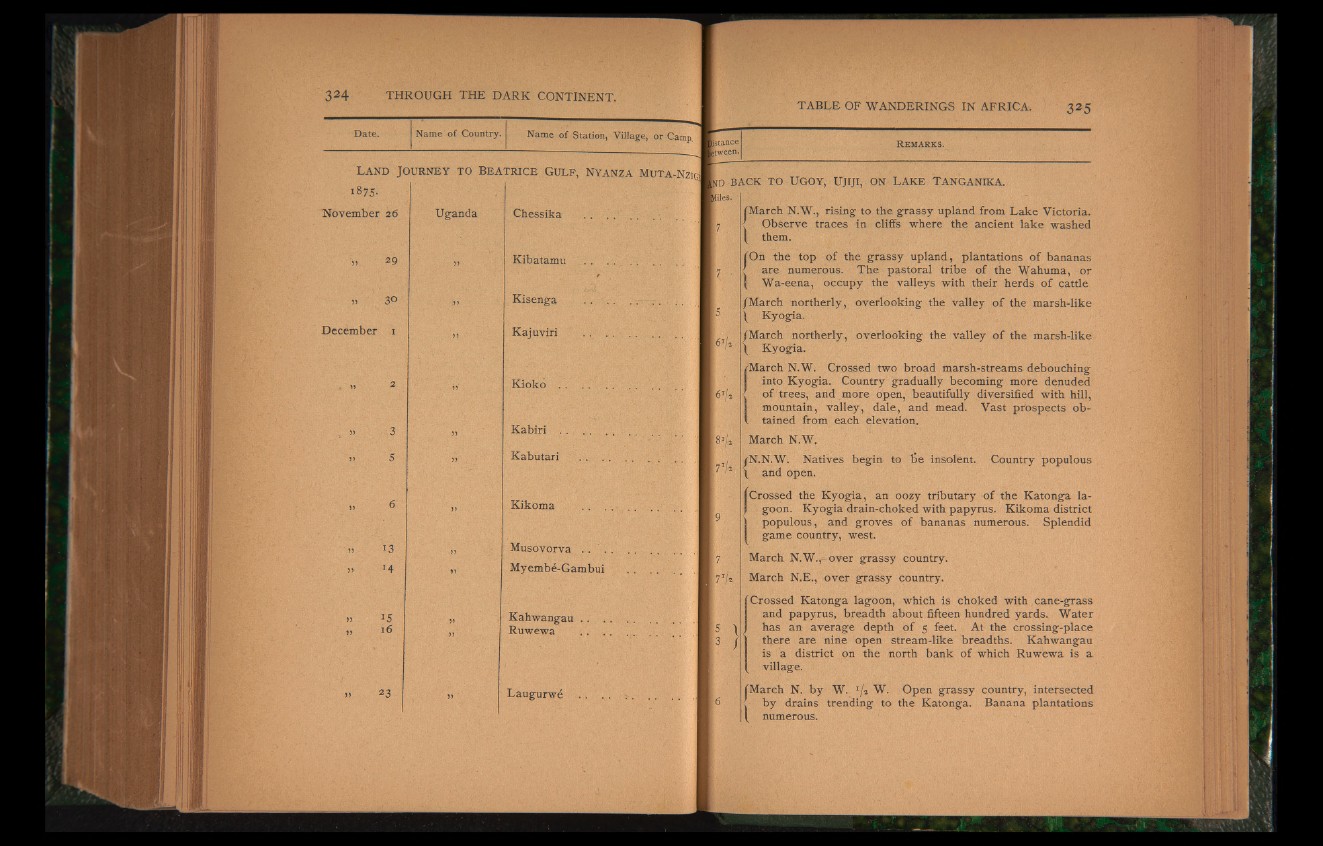
fID BACK TO UGOY, UJIJI, ON LA K E TANGANIKA.
lies;’
fMarch. N.W., rising to the grassy upland from Lake Victoria.
/ O h t ip r v p in cliff«! w i i c r p f l ip Observe traces in cliffs where the aanncciipenntt lloaVkoe wwroa0sVh1ed
them.
fOn the top of the grassy upland, plantations of bananas
' are numerous. The pastoral tribe of the Wahuma, or
Wa-eena, occupy the valleys with their herds of cattle
/March northerly, overlooking the valley of the marsh-like
\ Kyogia.
/March northerly, overlooking the valley of the marsh-like
\ Kyogia.
rMarch N.W. Crossed two broad marsh-streams debouching
into Kyogia. Country gradually becoming more denuded
' of trees, and more open, beautifully diversified with hill,
mountain, valley, dale, and mead. Vast prospects obtained
from each elevation.
n
March N.W.
/N.N.W. Natives begin to be insolent.
\ and open.
Country populous
u
(Crossed the Kyogia, an oozy tributary of the Katonga lagoon.
Kyogia drain-choked with papyrus. Kikoma district
j populous, and groves of bananas numerous. Splendid
game country, west.
March N.W.^over grassy country.
March N.E., over grassy country.
Crossed Katonga lagoon, which is choked with cane-grass
and papyrus, breadth about fifteen hundred yards. Water
has an average depth of 5 feet. At the crossing-place
there are nine open stream-like breadths. Kahwangau
is a district on the north bank of which Ruwewa is a
village.
("March N. by W. */* W. Open grassy country, intersected
{ by drains trending to the Katonga. Banana plantations
I numerous.